On Wednesday, September 25th 2013 the City hosted a “Yahara River Corridor Public Meeting”. It wasn’t a very helpful agenda, so I pulled together some background information for myself. Here’s some of that info, and a bit of the flavor of the meeting.
First, the meeting agenda
Overview
The City of Madison’s Planning Division is hosting a meeting to discuss the planning vision for the Yahara River Corridor and environs. Seven plans in the last 19 years have made recommendations for the Yahara River Parkway and adjacent properties. The purpose of this
meeting will be to review these plans and explore implementation strategies. The implementation of these recommendations will require a finer degree of planning and design. This meeting is intended to be a first step in that process.The actual agenda itself:
1. Summary
2. Concept Approach
3. Current Plans and Regulations
4. Analysis Exercise
5. Report Out
6. Next Steps
7. Adjournment
It sounded like, and was, a typical Madison planning meeting of “We’re going to throw some information at you, then break you up into small groups to be sure that there are no spectacles, get you to react to some things and try to collect feedback”. I can’t say I love the format (I think it cuts off interesting ideas too early), but the old quote about democracy seems relevant here: ‘the worst form of government, except for all the others.”
One of the things that I found very frustrating about this meeting was there wasn’t any background information provided ahead of time. Nothing linked to in the agenda, nothing included in the press release or email notices from the Alders, and really not much in the news coverage of the meeting. This happens too frequently in Madison, and has two bad outcomes. First, there’s not an opportunity to study the material ahead of time and prepare good questions. Second, most of the feedback the city gets by meeting attendees is not done with deep reflection. Granted, the city can’t count on every attendee reading every document ahead of time, but providing some information ahead of time will help them at the meeting. What would be super-helpful, in addition to background documents, would be to create a 3 minute short Youtube overview of what’s going to be discussed at the meeting, and perhaps a 10 or 15 minute, longer version of it as well. Yes, they’ll have to repeat it all at the meeting, but seeing it twice might clarify things for initial viewers, and certainly they’ll get better questions and feedback with if the meeting attendees had some time to think about things before the meeting.
For this meeting, what was disappointing is that there actually was some great background material online in The Yahara Gateway and Parkway Summary and Overview. It’s a good document and was well-done, and I wish that it had been shared more widely beforehand. It’s dated January of 2013, but I must have missed it. I know that the Board of Parks Commissioners saw it at their meeting of July 10th 2013 but otherwise, I’m not sure what other commissions or meetings it may have discussed this document.
The document summaries the seven plans involved:
- City of Madison Comprehensive Plan – 2006
- East Washington Avenue Capitol Gateway Corridor Plan – 2008
- Tenney-Lapham Neighborhood Plan – 2008,
- East Rail Corridor Plan – 2004
- Yahara River Parkway and Environs Master Plan – 1998
- Emerson East–Eken Park Neighborhoods Plan – 1998
- Marquette-Shenk-Atwood Neighborhood Plan – 1994
It also gives an overview of Ossian Cole Simonds’s plan from 1903, as best anyone can figure out, and tries to compare what was originally planned with what’s there. Finally, it concludes with a diagram with some ideas of where to go from here:
Some additional info that would have been helpful to know ahead of time: the area under discussion is the stretch between Johnson Street and Williamson Street. North of that is Tenney Park, which is pretty well settled (though there is a large vacant site where Sony had offices that should be part of the conversation), and south of that gets into residential structures that are too complicated to put together any sort of redevelopment effort, so there’s less of a sense of urgency.
Inside that zone are many opportunities for bringing the land up to a better use. Along the East Washington corridor, it’s been clear that after Breese Stevens, the next section that is begging to be made more interesting is the Yahara river, and this meeting and planning effort is a sign the city expects development to start happening along the Yahara soon. With the activity at Breese Stevens in the 700 and 800 blocks of East Washington – one project open, and at least three more hopefully moving forward soon, providing another “bookend” will help us fill in the rest of the East Washington corridor over the next 10 years and is very exciting.
* * * * *
The goal of this planning effort is not so much to create a brand-new plan, but to try to prepare more detail for the area following the parameters already established by the existing plans. As development proposals come forward, the idea is to be able to provide developers with a better sense of what the entire corridor should be, and to have them demonstrate what parts of that vision their project helps achieve. For example, if the new plan calls for increased recreational activities on the water, if a redevelopment project comes along, they can show that they contribute to that goal by including a canoe and kayak rental shop.
While the corridor seems like it should be the next happenin’ place, redevelopment proposals have had some tough goings on the Yahara river thus far. The most prominent site is the Marlin Lumber yard. I love Marlin Lumber as a business (Related, condolences to the Marlin family for the recent passing of William Marling ), but a lumber yard is a pretty terrible land use for a location so attractive to people. It’s one of the few businesses that being able to bike to is really not a useful attribute.
Here’s the site:
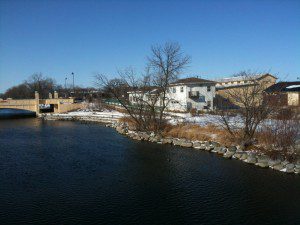
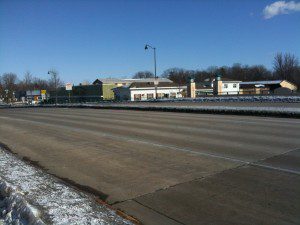
(Yes, that’s snow in the picture. I’ve been stewing on this blog post for a long, long time)
Five years ago, it looked like we were going to see some action – from the June 1st 2007 State Journal:
“MARLING LUMBER MOVING, WILL SELL E. WASHINGTON AVE. SITE Officials with the 103-year-old company, which has been at the location since 1920, say the move to T. Wall Properties’ The Center for Industry & Commerce along Highway 51 will provide room for growth.
The sale will also likely mean new life for the East Washington Avenue site and help create a gateway to the central city.
East Washington Avenue has been a hub of activity in recent years. The roadway is being reconstructed with wider lanes and improved lighting while developer Todd McGrath is building Union Corners, a more than $100 million, 15-acre mixed-use development near Milwaukee Street that is one of the largest redevelopment projects in city history.
McGrath, along with Joe Krupp, has also purchased the shopping center at First Street and East Washington Avenue, now called Washington Plaza. Krupp said Tuesday that the whole area has great potential.”
But it was not to be – from the April 1st 2008 State Journal:
“MARLIN LUMBER WON’T BE MOVING
One of Madison’s oldest businesses is staying put after all.
Marling Lumber Co. announced plans last spring to move from its location in the 1800 block of East Washington Avenue to a nine-acre site at T. Wall Properties ‘ The Center for Industry & Commerce along Highway 51 at Hoepker Road, northeast of the Dane County Regional Airport.
But now, 10 months after that announcement, general manager Tom Marling said he will redevelop his 3.8 acres with new buildings including a multilevel building for the company’s showroom, offices and a parking structure.
“It became apparent that given the downturn in the housing market, we stood a better chance of developing our property where we are,” Marling said.
Of course, just across the street from Marlin Lumber was what Madison considered the leading candidate for a “high-speed” rail station, and could have been much more. This piece by Joe Tarr in the Feb 11th, 2010 issue of the Isthmus “Mayor is sold on the virtues of a Yahara River site for Madison rail station” summed it up:
“My sense of it, from talking to the governor and the secretary, is they’re less focused on a particular location than making sure we get it done on time,” he says. “I don’t want to do anything that interferes with that goal.”
But Cieslewicz thinks there’s much to commend a station at Yahara, especially the possibility of spurring economic development along East Washington Avenue.
“That’s been ripe for a renaissance for many years, but we’ve been looking for a spark,” he says. “And I think this could be the spark.”
Of course, that didn’t work out and a downtown station location was chosen, and then of course Scott Walker derailed the whole thing. Interest in the site remains high, and at the meeting on the 25th, there were calls for it to be remembered as a potential transit hub for the future. The strip mall is apparently for sale (for 1.6M over the assessed value!) and one hopes that if it is redeveloped, it’s for a considerably more interesting use than a one story strip mall.
Following the river downstream towards Lake Monona just a bit, a project moving forward is the state’s plan to build an archive preservation facility for the Wisconsin Historical Society and the Wisconsin Veterans Museum. In this Dean Mosiman piece in the State Journal titled “State seeking to build major archive preservation facility on the Near East Side” from August 8 2013, we get these quotes:
“It’s a great project,” said Sen. Fred Risser, D-Madison, a member of both the Building Commission and board of curators at the Historical Society. “It upgrades the neighborhood. More importantly, it provides very, very needed storage space for the Historical Society and Veterans Museum.”
Mayor Paul Soglin applauded the decision, saying it’s appropriate to locate the archives on the Isthmus and that the specific site is close to public transportation and convenient for archivists and others who will work there.
The state has been working closely with the city on the conceptual design of the building and to make sure it fits with the city’s long-range plans for the Yahara River corridor, Soglin said.”
Ignoring the fact that the project is moving forward and we’re just now talking about the long-range plan for the corridor, Fred Risser and Paul Soglin are dead wrong. This is an awful project. At the intersection of a bike path and a river, and just steps from the most walkable neighborhood in Madison, they want to put…a storage facility? That’s absurd.
Sure, it will be a nice building, and sure, it will have a small museum component. But by and large, it’s shelves of stuff that is hardly ever looked at, and given digitization of the archives, will be looked at even less. It doesn’t bring any new jobs, and has negligible impact on increasing business patronage in the area. Outside of 9am to 5pm, it’s dead. It contributes little to the neighborhood. Even a cemetery would contribute more.
This corridor should be for people, not for musty old books. The Historical Society needs the storage space, but put it somewhere else. Find an empty big box store or something similar farther outside of the isthmus and locate it there. Don’t waste this amazing location where people really want to live. I was happy that this whenever this was mentioned at the meeting, there were lots of nods of agreement by the public, and I’m hopeful that the city will be less enthusiastic about the State’s plan.
Finally, the Mullins Group is a major property owner in the area, and have some doodles for what they may try to do with their sites, mostly on the West side of the Yahara. This image is from the February 16th, 2011 Capitol East District Stakeholder’s Meeting:
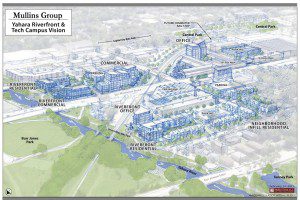
It’s attractive, but it didn’t blow me away. Certainly it’d be nice to get rid of eyesores like the Sparkle Auto Body shop:
and this little building (which for a while was a leading contender to be the Day Shelter, which would have been an awful outcome. I want there to be a day shelter, but I want to tear down that building and activate the Yahara, and if the County owned that building it would have complicated those plans)
I was interested in hearing more from Mullins at the meeting, but they didn’t have anything to share. As for their vision, I’m skeptical. No one has much confidence in the Mullins Group to actually move forward in a timely manner. I think our best bet is if they decide to sell.
* * * * *
Thinking forward, I think the plans need to address two things.
First, the height limits at these sites, especially on East Washington, are too low. Most of the plans talk about a 4 story max in the area.
What would be enormously helpful for the development of the area, to turn it into a true destination, is to amend the plans and allow for enough height to finance some truly signature buildings. Madison talks about exceptional architecture, but we rarely achieve it. The river, the bikepath, the lakes, Willy Street, easy access to downtown: it’s an amazing location. Relax the height limits and we’ll have buildings under construction in 9 months.
The other we need to address is just what we mean by enhancing the parkway. Marsha Rummel summed it up perfectly in the September 25th 2013 State Journal article by Dean Mosiman about tonight’s meeting, “City seeks public input for Yahara River corridor”
“Some areas of the corridor, especially around East Washington Avenue, might be appropriate for public uses such as canoe and kayak rentals, a bike or paddle shop, and cafes or restaurants, [City Planner Bill] Fruhling said.
“It will be a pretty popular place and a place people want to spend time, if it’s done correctly,” he said.
But there will be tension between those who want to keep the corridor natural and wild as opposed to a place full of amenities, Rummel said.”
Count me among those who want to see more amenities. Now, I’m not saying pave paradise and put up a parking lot or Walmarts on every block face, but I don’t want the whole thing to be a nature preserve, either. One of my all-time favorite places in the world is the Washington Harbour in DC, near the Kennedy Center and the Watergate hotel on the banks of the Potomac. Now, the Washington Harbour building is clearly far too massive for the Yahara, but that’s the sort of interaction I’d like to see on at least part of the corridor: to be able to have somewhere to go and a reason to linger. Walkers, joggers, and bikers pass right along the river, moving between an urban space and a forested space in a short span, both co-exist. Indeed, being able to move between them is one of my favorite parts.
(This image is from Wikimedia Commons)
Admittedly, being that close to the water has some dangers: a massive flood in 2011 dealt it serious damage. It has floodgates, but they weren’t raised in time.
A while back, my boyfriend and I went to Florida for an escape from winter trip to the beach. One day we decided try lunch in Fort Lauderdale, and on our way to the crepe place (which was amazing) I saw this building and made him pull over and let me out:
They’re the Venezia Las Olas condos.
I loved that it was right on the little river, and it instantly made me think of how great this would be in Madison, on the Yahara, maybe at the Marlin Lumber site. My guess is that we couldn’t get support to get that near the river, and so it would need to set back a bit, but I think you could get very close and still have it work. I loved the variety of shapes, colors, and balconies. It’s probably too South Florida for Madison, but if it was in Madison, it would be one of our most exceptional buildings, and stand out much more than the usual boring boxes that come out of the Urban Design Commission. As the Yahara River Parkway is both a local landmark and listed on the National Register of Historic Places, I’m probably just going to have to accept that we’re going to get a prairie-style building not matter how blasé they have become.
A tall signature building, near East Washington and yet on the river, would I think be a welcome addition to the entire Capitol Gateway, while being the fastest way to get us towards something that can provide interesting programming and amenities on the Yahara. Set a 10 story interior height limit at either the Marlin Lumber, the WERC, or Sparkle Auto Body site, and I’ll bet some developer takes us up on it very, very quickly.
* * * * *
The entire project now has an online home with the Planning Department where they pledge to post updates, including the presentation from the other night. The second half of the meeting had us working in small groups of six people or so, with each group given large maps of the area. We were encouraged to write reactions straight on the map, so Planning department has many comments to sort out and analyze.
Moving forward, this is a mostly staff-driven effort for a while. This fall, they’ll work in the feedback they’re getting, and prepare a couple of different concepts, and invite people back for more public meetings. They’d like to finish up iterating on the ideas over the winter, and then start it through a city approval process and finish up by the summer.
They’re not planning on having an advisory committee for the process because they’re only going to make recommendations. So, for example, they wouldn’t actually try to change the height limits. Instead, they may recommend that the height limits be changed, which could then start a process that goes through and amends the relevant plans. This seems like an unfortunately slow way to go about it, so I hope they reconsider.
There’s a second “timeline” question, asking just how fast do we want to see these changes occur? In some ways, planning documents are timeless – if at the end of some arbitrary number of years the planned area looks like what the plan called for, it’s irrelevant if it took 1 year or 20 years to achieve it. On the flip side, if the goal of a plan is to effect some changes within a certain timeframe, the plan needs be sure that it has a theory of action to either directly make those changes or create an environment to induce those changes. The timeline to change was not addressed at the September 25th meeting.
One of the great treasures of Madison is our interaction with the water. There is perhaps no more iconic Madison location than the Memorial Union terrace, a key anchor of the lakeshore path along Mendota, though the John Nolen causeway along Monona is an awfully special place in Madison as well. The Yahara has the potential to be our Third Coast, and a momentum builder for the entire East Washington corridor. I hope we can come to a consensus for how it can be special to many people, all with different reasons for loving it.

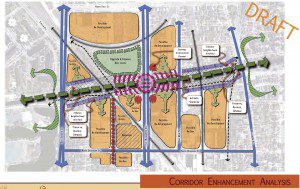
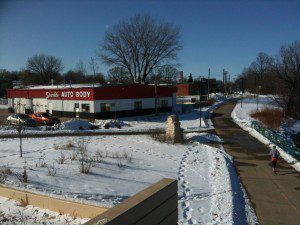
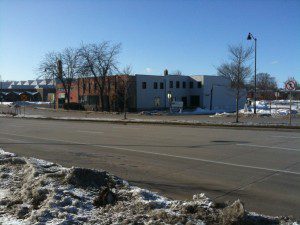
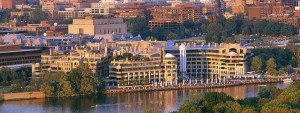
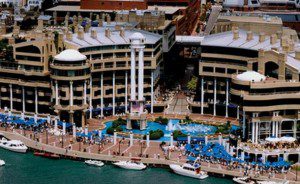
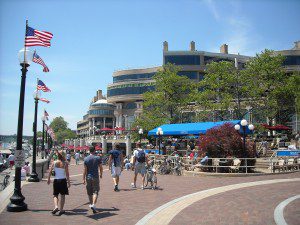
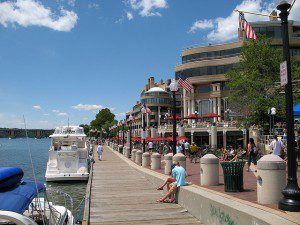
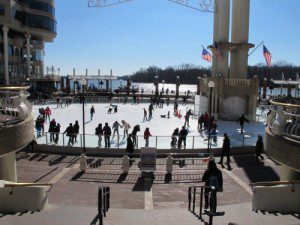
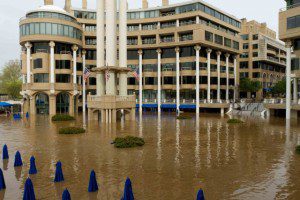
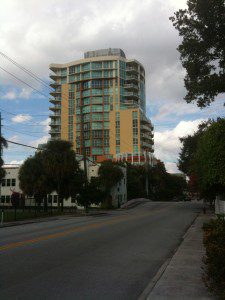
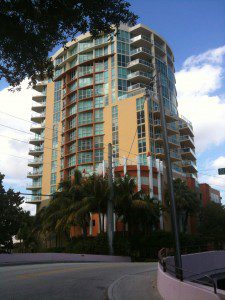
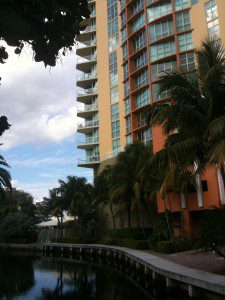
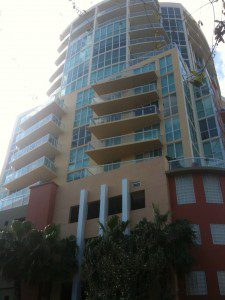







Great blog post. Keep it up!